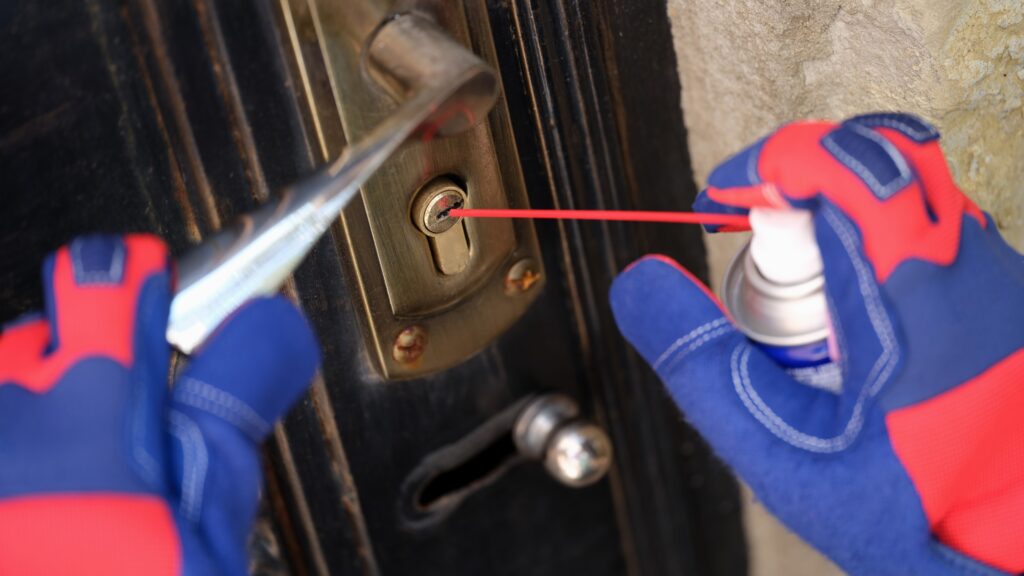Lock problems can be a real hassle. This guide covers 10 common lock problems and how to fix them. From misaligned locks to stuck keys and electronic malfunctions, find out how to solve these issues quickly and easily.
Key Takeaways
- Misaligned door locks and jammed locks can be fixed by adjusting the strike plate, hinges, or applying appropriate lubrication and cleaning methods.
- Issues like keys getting stuck or breaking in locks often result from rust, damage, or excessive force; using rust removers, lubricants, or extraction tools can help resolve these problems.
- Electronic lock malfunctions typically stem from low batteries, software glitches, or signal interference; regular maintenance and software updates are essential for smooth functionality.
Locked out or need a key replacement? Trust 3 Guys Locksmith to handle it all with professionalism and efficiency. Our expertly trained technicians specialize in home, auto, and commercial locksmith services, offering the quickest and most affordable solutions.
Whether you’ve lost your keys or are locked out of your car, truck, home, or office, we’ve got you covered. We prioritize your needs, ensuring you receive top-notch service every time. Call us at (305) 907-7707 to schedule an appointment or take advantage of our same-day service.
Also Read: Comprehensive Lock Repair Services in Cutler Bay, FL: What You Should Know
Misaligned Door Lock
A misaligned door lock can be a headache, making it difficult to secure your door properly. This problem often arises due to changes in temperature, weather conditions, or simply from the door settling over time. When your door latch misses the strike plate by more than 1/16-inch, it’s a clear sign that the strike plate needs to be relocated. Misalignment can also cause the door to scrape against the jamb, which can be fixed by tightening the top hinge screws or replacing them with longer screws.
For doors that are warped or have a persistent misalignment, here are some possible solutions:
- Sand down the latch-side edge of the door
- Adjust the hinges or strike plate to alleviate pressure on the lock mechanism
- Chip away wood from the door jamb to set the strike plate deeper if it scrapes against the door
These steps can help improve the functionality of your door.
A properly aligned door and lock can mitigate future issues, improving lock usability. Simple adjustments and regular maintenance can keep your locks functioning smoothly, providing peace of mind and security. By hiring a locksmith Homestead, FL, you can ensure these adjustments are made correctly and efficiently, maintaining the safety and integrity of your home or business.
Key Stuck in Lock
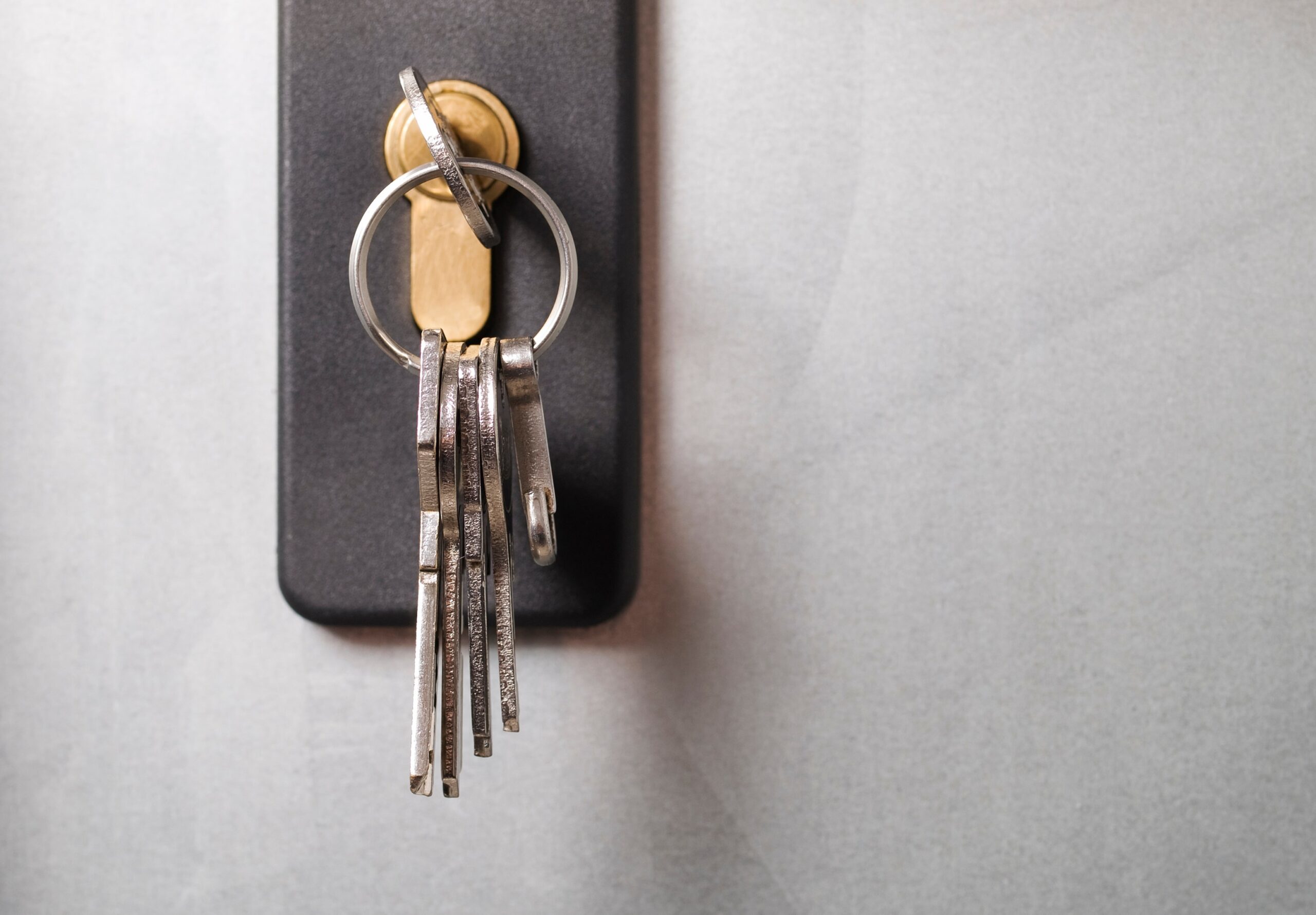
Finding your key stuck in a lock can be a nerve-wracking experience, especially when you’re in a hurry. This issue often stems from rust or damage inside the lock mechanism. Applying a rust remover can help loosen a key stuck due to rust. Another effective solution is to lubricate the lock with a graphite-based lubricant, which can help release the key by reducing friction within the lock.
If these methods don’t work, using a broken key extractor tool can be particularly effective. These tools are designed to grip and pull out the stuck key without damaging the lock. However, if the key remains stubbornly lodged, it might be time to call in skilled professionals for locksmith services to avoid further damage. Skilled locksmiths in Florida have the expertise and tools to safely remove the key and restore your lock’s functionality.
Regular lock maintenance, including periodic lubrication and cleaning, helps prevent stuck keys in a locked car, assures smooth operation, and reduces wear and tear.
Also Read: Fast & Reliable Locksmith Miami – Get Help Now!
Broken Key in Lock
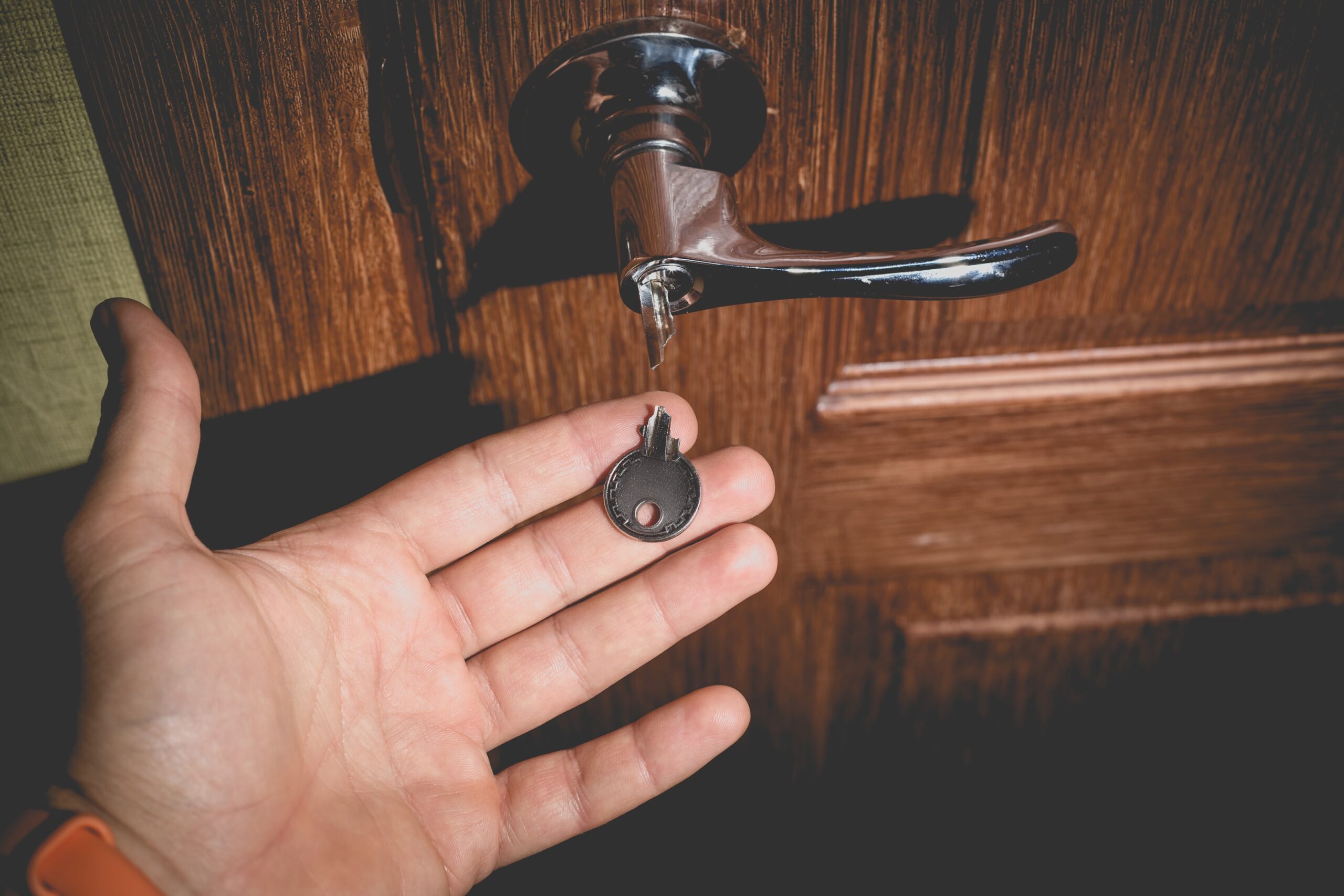
A broken key in the lock is a common but frustrating problem. This often occurs due to excessive force or using a key that is already worn out. If a part of the key is protruding from the lock, you might be able to extract it using pliers or tweezers. Be gentle to avoid pushing the broken piece further into the lock.
For keys broken inside the lock, using a screwdriver and a piece of steel wire to push the broken part out from the back of the cylinder can be effective. Avoiding excessive force when turning keys and replacing them at signs of wear and tear is vital. Regularly checking your keys for signs of damage can prevent breakage, saving you time and hassle in the long run. Additionally, consider a locksmith advising on proper key maintenance to ensure longevity.
Preventive measures, like appropriate key use and regular condition checks, can significantly reduce the likelihood of breakages inside the lock.
Jammed Locks
Jammed locks are a common issue caused by the buildup of grime, dirt, or rust inside the lock mechanism. When dirt and debris accumulate, it can prevent the lock from turning smoothly. Cleaning the lock by blowing compressed air into the keyhole can help remove loose dirt and grime.
Applying a silicone-based lubricant or graphite powder into the keyhole and gently working the key can also help distribute the lubricant and free up the jammed mechanism. This method is particularly effective for deadbolts that fail to extend fully due to debris buildup.
Proactive lock maintenance and cleaning can avoid jamming, guaranteeing smooth and reliable operation. Addressing jammed locks promptly and maintaining them regularly can prevent more severe issues and prolong the lifespan of your locks, providing continued security and convenience.
Loose Door Handles or Knobs
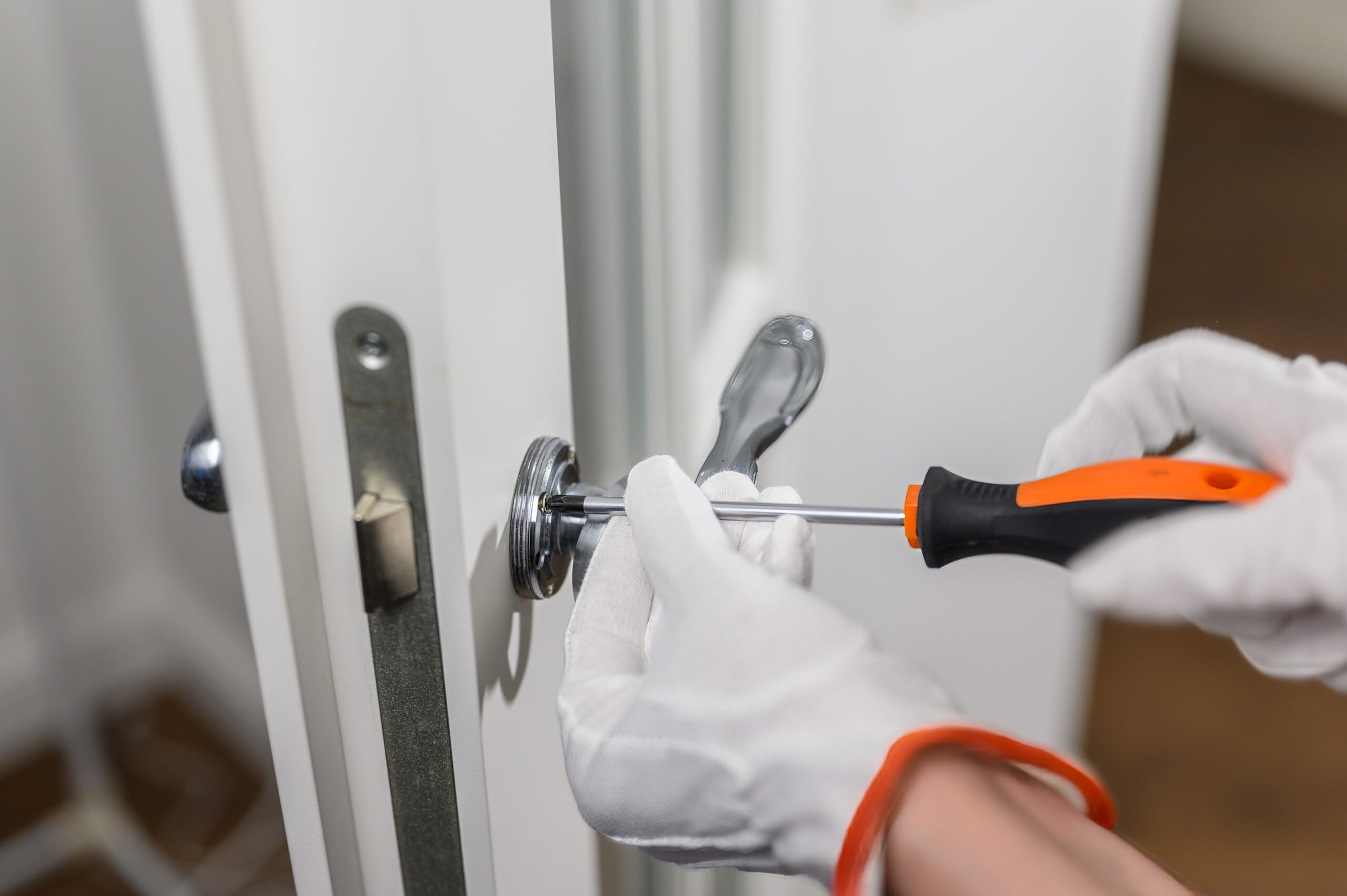
Loose door handles or knobs can make it difficult to open and close doors, compromising security. This issue often arises from loose set screws or worn-out parts. To tighten a loose door knob, use a screwdriver to twist the screws on both sides of the knob base clockwise. For door handles with exposed screws, loosen the set screw, remove the handle, and then tighten the set screw after making adjustments.
For handles with hidden screws, follow these steps:
- Locate the detent access hole.
- Press down on the pin using a flathead screwdriver and remove the handle.
- After removing the knob from the spindle shaft, carefully pry the ring loose using a flathead screwdriver.
- Holding the outside backing plate to keep it from moving, tighten each screw separately.
- Snap the ring back on the backing plate and reassemble the handle over the spindle shaft.
Securing your door handles and knobs can enhance door functionality and safety, leading to a more secure and comfortable environment.
Deadbolt Not Extending Fully
A deadbolt that doesn’t extend fully can jeopardize your security. This issue is often caused by the misalignment of the strike plate with the deadbolt. Repositioning or modifying the strike plate, such as filing its opening or drilling new holes, can address this problem.
To check for obstructions, remove the faceplate and thumb turn assembly or key cylinder to gain better access to the internal components of the deadbolt. Cleaning out any debris or grime can also ensure the deadbolt extends fully. Maintaining proper alignment and performing regular maintenance is essential for a functional deadbolt and a secure home.
Addressing deadbolt issues promptly with the help of a Homestead locksmith can prevent security breaches and ensure your locks operate smoothly and reliably.
Lock Cylinder Turning
When a lock cylinder turns without engaging the mechanism, it can be a sign of a failing cam or tailpiece lever. This issue can often be fixed by tightening the set screw located on the side of the lock cylinder. If the problem persists, the security curtain might be worn out and need replacing.
A faulty Euro cylinder or barrel might also cause the lock cylinder to turn without engaging, necessitating professional replacement. If tightening the set screw does not resolve the issue, replacing the lock cylinder may be necessary. Routine inspections and maintenance can identify potential issues early, guaranteeing the proper functioning of your locks.
Properly functioning lock cylinders are crucial for the security of your doors, and addressing issues promptly can prevent lockouts and enhance security.
Frozen Locks
Frozen locks are a common issue during cold weather, making it difficult to access your home or vehicle. Heating the key with boiling water or a lighter before inserting it into the lock can help thaw the mechanism. Another effective method is using a de-icing spray to quickly thaw a frozen lock.
Preventing locks from freezing in the first place is ideal. Applying a silicone-based lubricant before the onset of cold weather can help. Additionally, covering locks with magnets or duct tape during freezing rain can prevent water from entering and freezing inside.
Lock maintenance and preventive steps can ensure seamless functionality, even in severe winter conditions.
Worn Out Keys
Keys can wear out over time, especially if they are made of soft metals like nickel or silver. Improper use, such as prying open cans or cutting packaging, can also lead to keys breaking. If your keys show signs of damage like cracking, it’s important to replace them to avoid breakage.
Getting key replacement services can provide hassle-free key copy, duplicating keys, key duplication, and replacement. Regularly inspecting your keys and replacing them when necessary can prevent unexpected breakages and ensure you always have a functional key.
Proper key care, including automotive keys and key fobs, and timely key cutting for replacement of worn-out ones can prevent inconvenient situations and maintain lock security. By acquiring new keys or duplicate keys when necessary, you ensure the longevity of your locks. For all your key-related needs, consider seeking quality locksmith services.
Electronic Lock Malfunctions
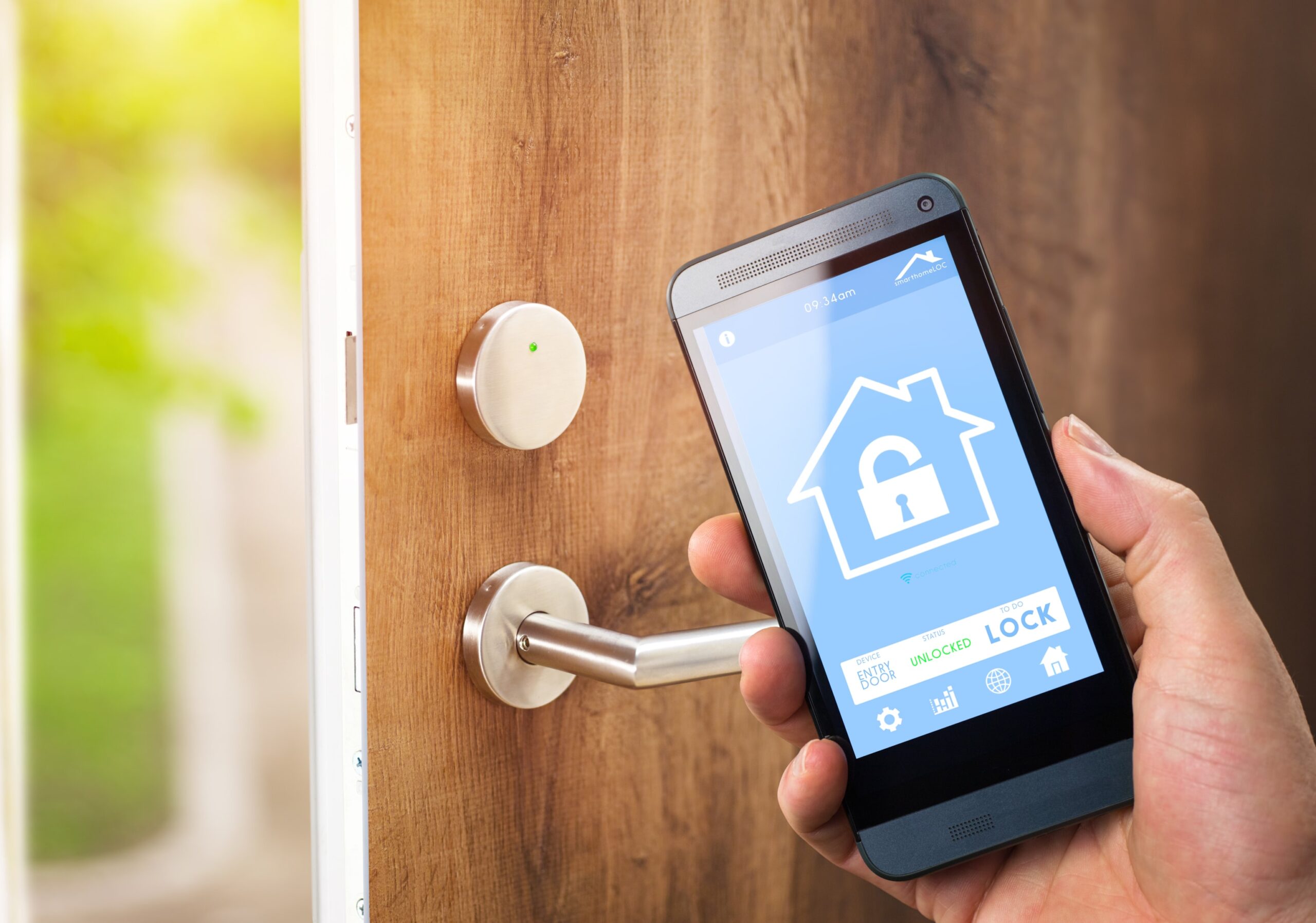
Electronic locks offer convenience but can sometimes malfunction due to various reasons. Low or dead batteries are a common culprit and can result in slower response times or intermittent functionality. Replacing the batteries can often resolve these issues.
Software glitches can also cause problems, such as failure to detect authorized users or disruption of auto-unlocking capabilities. Performing a software reset or updating the lock’s firmware can address these issues. Additionally, clearing the app’s cache or reinstalling the controlling app can resolve app-related problems.
Interference from other electronic devices or physical obstructions can disrupt the wireless signal, affecting performance. Restarting the router or reconnecting Bluetooth can help resolve these temporary connection glitches.
Routine maintenance and updates can ensure the smooth operation of your electronic locks, offering dependable and convenient security.
Also Read: Secure Your Home Anytime, Anywhere with Miami’s Premier Locksmith Services
Rely on 3 Guys Locksmith for All Your Lock Needs in Florida
Locks are critical to our security, and understanding common problems and their solutions can save you time, money, and frustration. From misaligned door locks to electronic lock malfunctions, addressing these issues promptly and correctly can ensure your locks function smoothly and provide the security you need.
Regular maintenance, timely repairs, and using your locks and keys correctly can prevent most issues, ensuring your security system remains robust and reliable. Stay proactive in your lock maintenance to enjoy peace of mind and seamless access to your spaces.
At 3 Guys Locksmith, we understand the urgency of getting back into your home, office, or car. Are you in need of a reputable and trusted locksmith for your residential or commercial needs? Searching for key copy near me in Florida? Look no further than our professional locksmiths in Florida. We proudly serve the following areas:
- Sunny Isles
- Aventura
- North Miami Beach
- North Miami
- Cutler Bay
- Homestead
- Hialeah
- Coral Gables
- Doral
- Key Largo
Call 3 Guys Locksmith at (305) 907-7707 or reach us online by completing our online contact form. We will send a trusted technician to your home, school, office, or other location promptly, ensuring you regain access quickly and safely.

